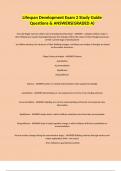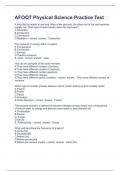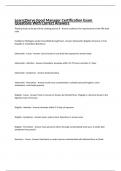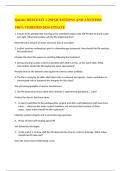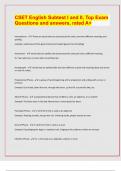Tentamen (uitwerkingen)
Lifespan Development Exam 2 Study Guide Questions & ANSWERS(GRADED A)
- Vak
- Instelling
How did Piaget view the child's role in development/learning? - ANSWER - mistakes children make in their thinking are usually meaningful because the mistakes reflect the nature of their thought processes at their current stage of development - as children develop, the structure of their thinking c...
[Meer zien]
